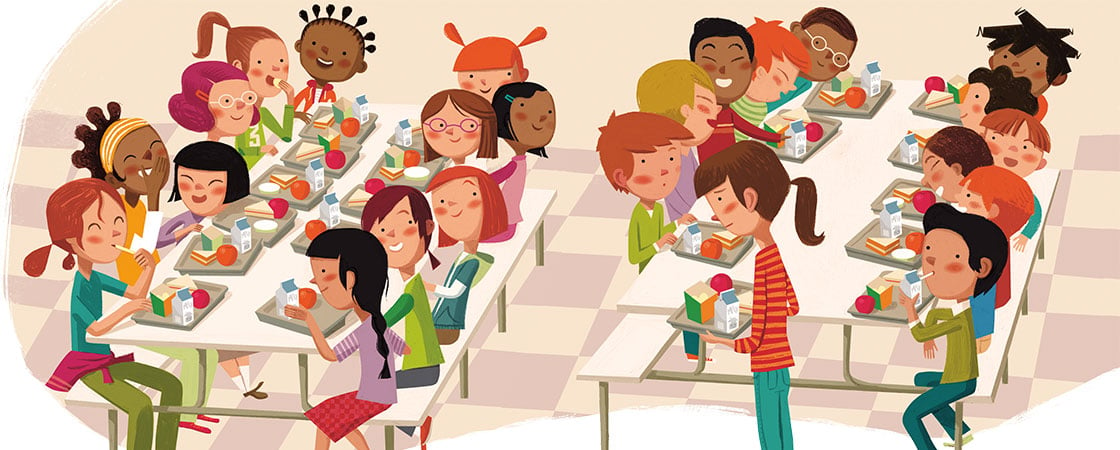Curious to know more about bringing Mix It Up at Lunch Day to your school? This checklist breaks it down for you.

Should Students Have Assigned Seats in the Cafeteria?
For some kids, lunchtime can be a nightmare. Is assigned seating the answer?
Standards
Ask your students: If you had to sit at a new table today, how could you start a conversation with the other kids? Brainstorm fun questions together, such as “What would you do if you won $100?” “If you could have any superpower, what would it be?”
There’s a school in Michigan where students eat outside every single day “unless there is a thunderstorm, a torrential downpour, or severe sub-zero temperatures,” according to the school’s website. Would your students want to eat outside every day if they could?
Did you have trouble during lunchtime when you were a student? Did one of your own children? You might relay your experiences to the class and invite them to share their own.
1. PREPARING TO READ
Have students preview the text features. Ask:
What is the topic of the debate? (Prompt students to use the debate title and the heading on the chart as clues.)
What are the two opinions people might have about this topic?
2. READING THE DEBATE
Depending on the reading level of your students, read the debate as a class or break the class into groups.
Have students read the debate a second time. Prompt them to highlight evidence supporting each side as they come across it. Using two different colors of highlighters would be useful here.
3. DISCUSSING
As a class or in groups, have students discuss:
Which opinion has the best evidence to support it?
Is one side stronger than the other? Why?
What is your opinion? What evidence helped you form your opinion?
For more advanced readers: Do you think the author has an opinion on this issue? What is your evidence?
4. WRITING
Have students complete the chart in the magazine or our full-page printable chart.
Guide students to write an essay on the debate topic, using the chart they filled out.
5. CHECK COMPREHENSION
Have students complete our comprehension quiz.
